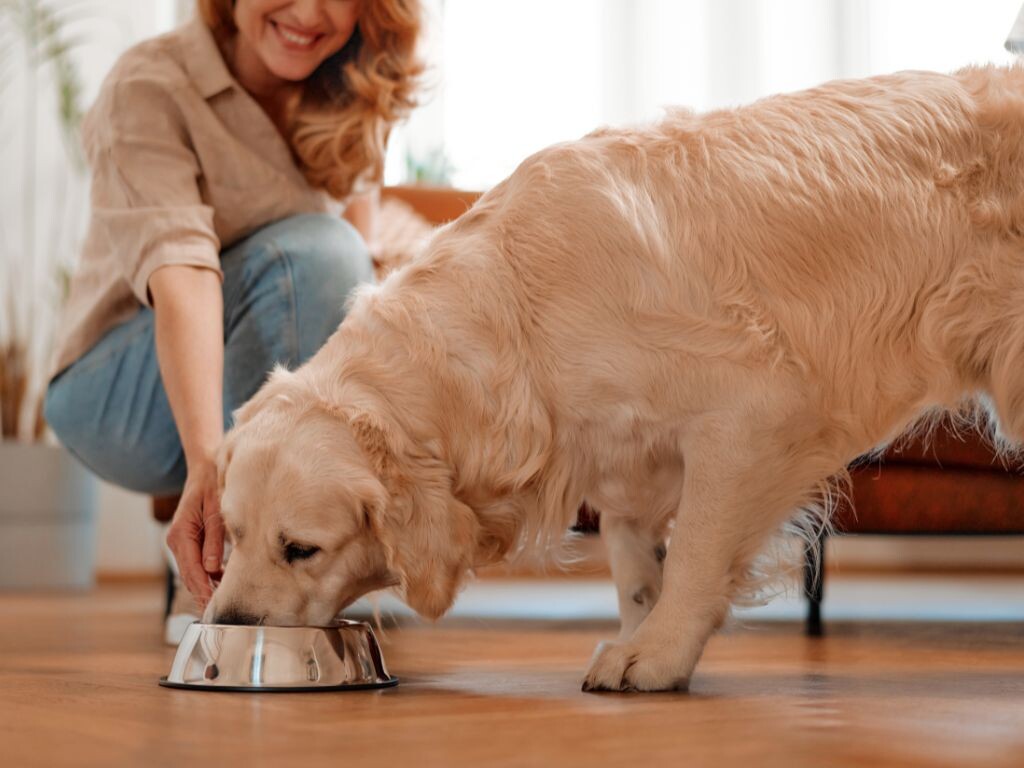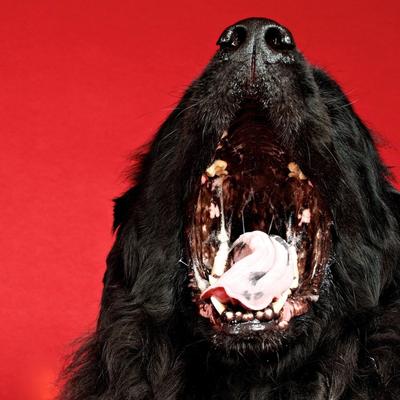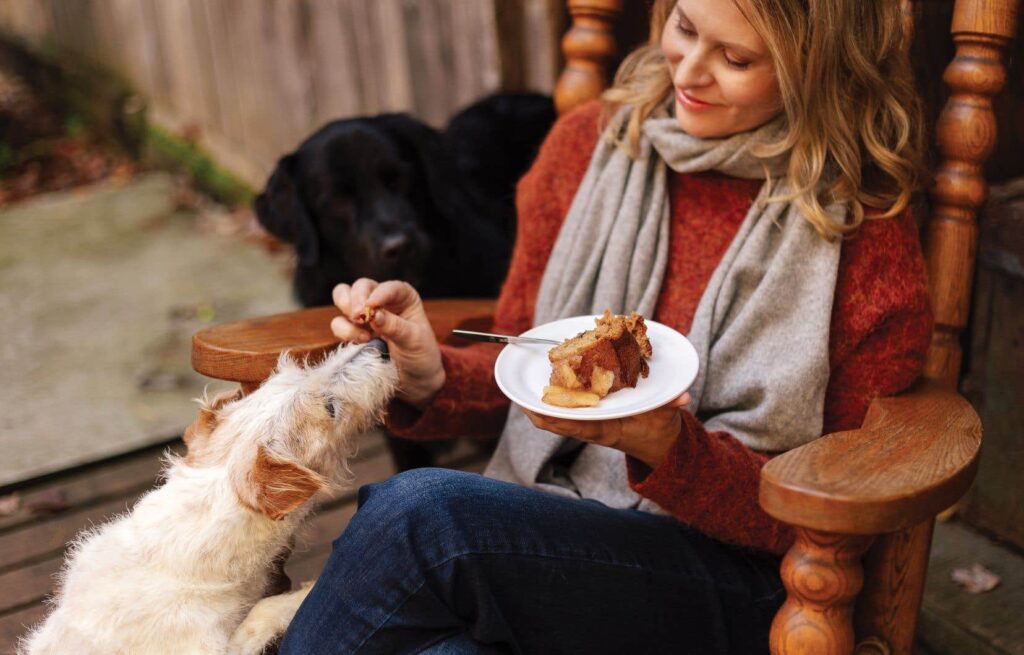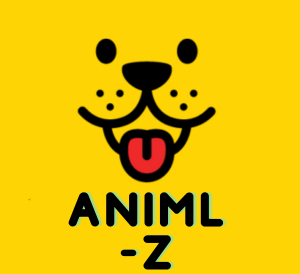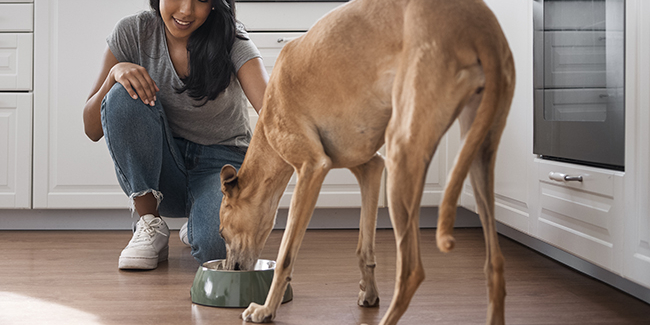
We speak of large dogs to describe breeds whose weight is at least equal to 26 kg as adults. Above 45 kg, they are even called giant breeds. These doggies have a particular metabolism and long growth, which requires a specific diet. In fact, they are not exposed to the same risks as smaller animals, which is why it is essential to provide them with food that is more respectful of their organism and their needs. Let's take stock of this matter.
Large dog: who are we talking about?
Large dogs are large doggies. We often distinguish between large breed dogs, with an adult weight greater than or equal to 26 kg, and giant breeds, which weigh more than 45 kg.
From large breedswe can therefore cite the Labrador (26 kg to 36 kg as an adult), the German Shepherd (28 kg to 35 kg as an adult), the Boxer (30 kg to 32 kg as an adult) , the Doberman (30 kg to 40 kg as an adult) and the male Golden retriever (32 kg to 37 kg as an adult).
For the giant breedsinclude the male Bernese Mountain Dog (36 kg to 48 kg as an adult), the Pyrenees Mountain Dog (40 kg to 56 kg as an adult), the Great Dane (50 kg as an adult) , the Dogue de Bordeaux (50 kg to 65 kg as an adult) and the Saint Bernard (80 kg as an adult).
What are the characteristics of large dogs?
Large dogs have the particularity of having very long growth and slower metabolism. In fact, they only reach their adult age and size around 15 to 24 months depending on the breed, compared to 6 months or less for small breed dogs. A difference… of size!
Their long growth and large bones therefore require specific dietary needs. We must not forget that these puppies multiply their weight by 70 to 100 depending on the breed as they grow! To allow a large dog to grow well and develop in optimal conditions, it is imperative to provide it with food adapted to its nutritional and quality needs.
Large dogs also have sensitive digestion which must be taken into account. Their greater weight also exposes them more to joint disorders and the risk of bone abnormalities, such as hip dysplasia and elbow dysplasia. These large dogs are also more prone to stomach dilatation-torsion syndrome than others, which is why you must be extremely vigilant.
The growth period must require particular attention, because it is this which will determine the future of the dog and the possible development of disorders, fragilities or anomalies likely to impact it in adulthood. To grow properly, a large puppy must ingest a greater quantity of energy than an adult dog, even though its stomach is much smaller. It is therefore necessary to provide him with more energetic and high-quality foods, in order to cover his intake while respecting a reasonable food volume.
Indeed, at any age, large dogs must be fed sufficiently without exceeding the capacity of their stomach. Consequently, we must opt for a highly qualitative, satisfying and nutrient-rich diet and premium foods.
Remember that large breed dogs are more exposed to the risk of stomach dilatation-torsion. It should therefore be avoided with a well-sized and nutritious food portion. Furthermore, their smaller digestive tract (less than 3% of their total weight compared to 7% in small dogs) makes their digestion more sensitive. They must therefore be fed a highly digestible diet.
How to feed a large dog?
What food to give to large dogs?
A large dog has very specific dietary needs, which is why he needs a suitable diet.
- We favor the high quality power supplies, very nutritious and satiating to limit the risk of dilatation-torsion of the stomach, a disorder which can cause the death of the dog within a few hours. Highly digestible kibble, which promotes good chewing, is more beneficial to the dog and allows good digestion.
- We avoid the fat intaketoo important not to disrupt the growth and digestion of the doggie. Furthermore, it helps to better regulate weight gain in order to prevent any problem of overweight and obesity, which could lead to serious illnesses (diabetes, kidney failure, liver failure, etc.), but also joint diseases. and bones. This lower need for fats is explained by the slower metabolism of large dogs. Your body requires less fat to maintain good health and maintain a healthy weight.
- We avoid the excess calciumin particular supplementation with complementary products that are often inappropriate, because this leads to weakening the dog's joints and its bones.
It is therefore preferable to buy dog food from the veterinarian, in a pet store or on specialized websites. It is better to seek advice from the practitioner beforehand to find the right product and avoid changes subsequently, which are generally sources of digestive problems.
These products are very high quality and cover the nutritional needs of the dog well. A well-fed doggie is a healthier animal, which greatly limits veterinary care, and therefore costs in this area. So of course, these high-quality foods are more expensive to purchase, but they are very filling, which allows a package to last longer than a traditional commercial product, and the dog's health is preserved at a lower cost. !
For a large dog, Large kibbles are preferable, because they require more chewing. The animal is thus better nourished, satisfied more quickly and its digestion is facilitated.
How to feed a large dog?
To allow large dogs to better digest their food and limit the risk of stomach dilatation-torsion syndrome, it is better to distribute their daily ration in at least two meals. If he tends to eat too quickly, you can even split his rations into three or four small meals, or even more.
However, be careful respect the dosagesrecommended on the product packaging! You must rely on the weight of the doggie to properly dose its daily ration and then distribute it more or less equitably over the day. Avoid overdoses to limit the risk of overweight and obesity. Furthermore, if you give your dog a few kibbles or treats during the day as part of his education, for example, deduct them from his daily ration, always to avoid excess weight. And with a large breed dog, you avoid leftover meals!
The doggie's ration must be served to him ambient temperature in order to allow it to benefit from its taste and smell in optimal conditions. Any leftovers should be discarded after 15 to 20 minutes.
Finally, of course, to reduce the risk of stomach dilatation-torsion syndrome, we do not give the dog food in the hour preceding an effort and in the two hours following it!
Furthermore, your dog must eat in a calmer and more serene environment (without the presence of humans or other animals), in clean bowls and on easily washable floors. Remember to leave it with clean, fresh water at all times.
If your little companion is elderly or if he suffers from bone disorders, you can raise his bowl slightly to prevent him from bending over.

